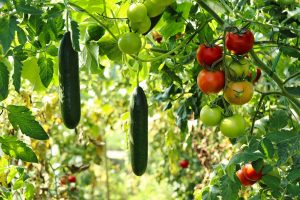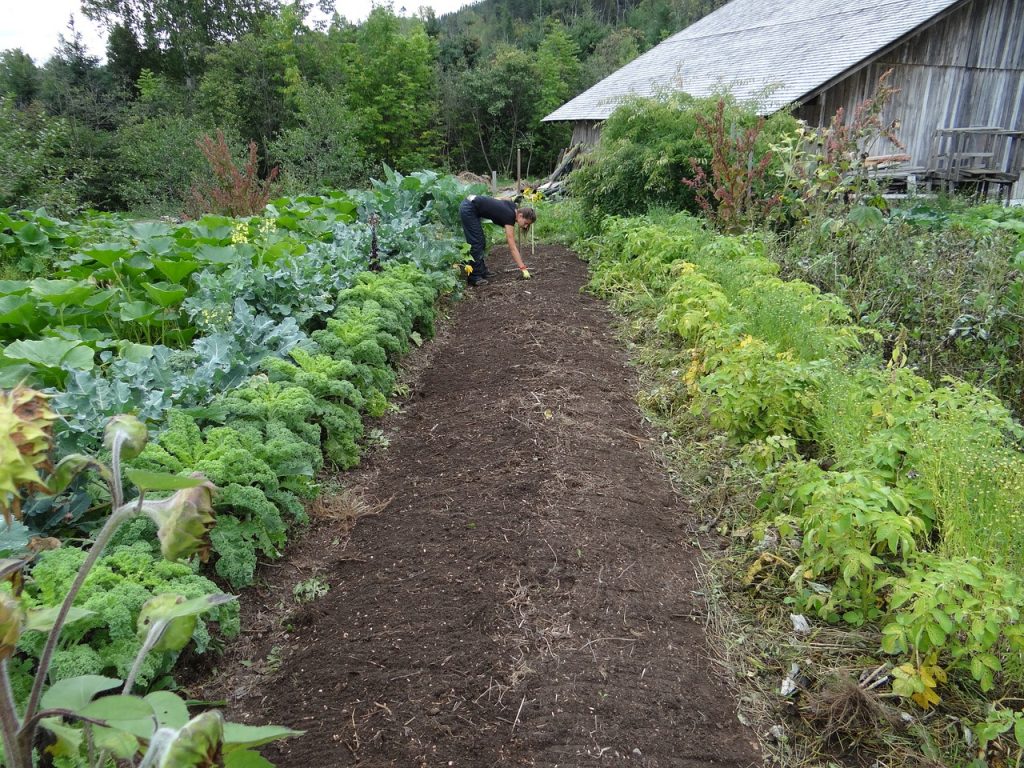The pursuit of a curated life extends far beyond the impeccably furnished living room and the artfully distressed denim jacket. Discerning individuals are increasingly embracing the farm-to-table ethos, not just on their plates, but within their own backyards. Gone are the days of utilitarian vegetable patches; the modern vegetable garden is a fusion of function and form, a statement piece that nourishes both the body and the soul.
This article delves beyond the basics of planting and weeding, delving into the world of sophisticated vegetable garden design. We’ll explore various layouts, incorporating insights from horticultural experts and landscape architects to unveil the secrets to cultivating a plot that is as productive as it is picturesque.
The power of sunlight planning
The foundation of any thriving vegetable garden is sunlight. A 2018 study published in the Journal of the American Society for Horticultural Science found that even minor variations in light exposure can significantly impact plant growth and yield [1]. Therefore, the first step towards a chic and bountiful harvest requires a keen understanding of your garden’s unique sun patterns.
Embrace the North-South Orientation: In the Northern Hemisphere, aim for a layout with rows running north to south. This maximises sun exposure for all your plants, preventing taller varieties from casting excessive shade on their shorter neighbours.
Befriend the sun dial: For a more nuanced approach, invest in a sun dial or utilise a sun tracking app to map out the exact light patterns throughout the day in your designated garden space. This knowledge empowers you to strategically position each plant type based on its specific sunlight requirements.
Exploring alternative layouts
While rows are a classic and efficient layout, they are not the only option for the discerning gardener. Here are a few alternative layouts to consider, each with its own aesthetic and functional merits:
Square foot gardening: Ideal for small spaces, square foot gardening involves dividing raised beds into a grid of one-foot squares. Each square can then be planted with a different variety, maximising space utilisation and creating a visually captivating patchwork effect [2].
The french potager: Embrace the romance of French chateaux with a potager, a decorative kitchen garden that seamlessly blends edibles with ornamentals. Here, flowers like marigolds and herbs like lavender not only add visual interest but also deter pests and attract beneficial pollinators [3].
Keyhole gardening: This innovative design, originally developed in Africa, features a raised bed with a central, kidney-shaped cutout that allows for easier access to all areas of the garden, particularly beneficial for those with limited mobility [4].
Reaching for the sky with style
For those with limited horizontal space, vertical gardening offers a stylish solution. Utilise trellises, wall planters, and hanging baskets to cultivate vining vegetables like cucumbers, beans, and peas. This space-saving technique allows you to create a verdant wall that is both functional and visually arresting.


Planting with panache
Beyond aesthetics, consider the concept of companion planting, a practice that strategically groups certain plants together to benefit from each other’s presence. For example, planting tomatoes alongside fragrant herbs like basil can deter pests, while nasturtiums planted near squash can act as a natural trap for harmful aphids [5]. This not only improves plant health and yield but also creates a visually harmonious tapestry of colors and textures within your garden.
Stepping stones to a stylish sanctuary
The path through your vegetable garden should be as thoughtfully designed as the plots themselves. Opt for stepping stones made from recycled materials like reclaimed wood or flagstone for a rustic yet elegant feel. Pathways made from decomposed granite or gravel offer a more contemporary aesthetic while ensuring good drainage.
The power of garden art
Artfully placed sculptures, birdbaths, and strategically positioned lighting can elevate your vegetable garden from utilitarian plot to an outdoor haven. A vintage watering can repurposed as a bird feeder or a weathered sundial adds a touch of whimsy and functionality. When selecting garden art, prioritize pieces crafted from natural materials that complement the overall aesthetic of your space.
Sustainable practices for long-term success
A chic vegetable garden is not just about aesthetics; it’s about fostering a healthy ecosystem. Utilize organic pest control methods like neem oil or ladybugs to deter unwanted insects while promoting the growth of beneficial ones. Implement water-saving techniques like drip irrigation to conserve this precious resource. By adopting sustainable practices, you cultivate a thriving garden that nourishes the environment for seasons to come.
The cultivated life
A well-designed vegetable garden is more than just a source of fresh produce; it’s a testament to your commitment to a cultivated life. It’s a space that reflects your personal style, fosters a connection with nature, and provides a haven for relaxation and creativity. Whether you’re a seasoned gardener or a curious novice, the journey of creating a chic vegetable garden is as rewarding as the harvest itself. So, grab your gardening gloves, embrace the spirit of experimentation, and get ready to cultivate a plot that is as beautiful as it is bountiful.
Resources for the discerning gardener
For those seeking to delve deeper into the world of vegetable garden design, a wealth of resources awaits. Here are a few suggestions to get you started:
Books:
. “The Complete Book of Square Foot Gardening” by Mel Bartholomew [2]
. “Edible Estates: Attacking the Hunger Crisis One Yard at a Time” by Heather Dennis [6]
. “Gaia’s Garden: A Guide to Healthy Eating from Our Own Backyards” by Toby Hemenway [7]
Online Resources:
. The National Gardening Association: https://garden.org/
. The Royal Horticultural Society: https://www.rhs.org.uk/
. The Kitchn: https://www.thekitchn.com/ (Gardening section)
The last bite – cultivating community
Finally, remember that gardening is not a solitary pursuit. Consider joining a community garden or connecting with local gardening enthusiasts. Sharing knowledge, swapping seeds, and celebrating each other’s successes fosters a sense of community and enriches the overall experience. As you cultivate your chic vegetable garden, remember that you are also cultivating a connection with the earth, your community, and the simple pleasures of growing your own food. Happy gardening!


